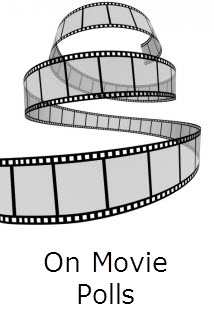Alice In Wonderland (2010)


Content by Tony Macklin. Originally published on March 14, 2010 @ tonymacklin.net.
Maybe I'm not as jaded as I should be. Maybe I'm still too wide-eyed. But I found Tim Burton's Alice in Wonderland to be a treasure trove full of delight and near-amazement. The imagery is bold and ravishing. Alice in Wonderland is surreal and smashing.
Maybe I was just in the right mood for flights of vibrant whimsy. I've often said in the past that it's crucial to get on a film's wavelength.
With Alice in Wonderland, I went hurtling down the rabbit hole, I rode the Bandersnatch's back, I imbibed the Mad Hatter's intoxicating tea. And I found my "muchness."
Purists may gag at Burton's version and vision of Alice and her world, but moviegoers should be engaged.
It may be sacrilege to compare Burton's Alice in Wonderland with The Wizard of Oz (1939), but there are distinct parallels. Both begin and end in familial, social settings. And both make them a point of resolution. Both young heroines embark on magical missions, fraught with danger and surprise. Both have memorable characters and delirious action.
Burton's Alice in Wonderland, released by Disney, has some traditional Disney qualities. Like Fantasia (1940), it will leave some viewers unimpressed, but like some eternal Disney classics -- e.g., Bambi (1942) and Snow White and the Seven Dwarfs (1937) -- it has lively sequences and unique characters that could have emotional traction.
Burton's Alice in Wonderland is not pure Lewis Carroll. Burton and screenwriter Linda Woolverton treat the tale as a fable of a young girl who at the end becomes transformed into an independent woman.
Alice is a 19-year old young woman when she follows the White Rabbit down the rabbit hole, as she tries to escape rigid Victorian mores and a hapless engagement to a vapid twit at a garden gathering.
Is she the Alice who is destined to battle the Jabberwocky for the White Queen against the Red Queen? What will become of her?
Mia Wasikowska [suicidal Sophie in HBO's series In Treatment] creates an Alice who is naive but steady, who retains her father's ability to imagine.
Johnny Depp -- with gleaming eyes and wild, orange hair -- is a merry vision of addled loyalty as the Mad Hatter.
Helena Bonham Carter -- Burton's actual life partner -- is the bratty Red Queen. She invests the role with fickle vitality. Anne Hathaway is a bit antiseptic -- I'm sure Burton intended that --- as the White Queen, who doesn't believe in killing.
Between the Red Queen, who wants to cut off everybody's head and the White Queen, who doesn't want to kill even an insect, Alice's cool equilibrium shines.
The voices for the animated characters have personality. Alan Rickman is at his most sonorous as the black syrup, baleful voice of the Blue Caterpillar.
Other voices that have affecting personality are those of Michael Sheen (the White Rabbit), Timothy Spall (Bayard the Bloodhound), Stephen Fry (the Cheshire Cat), Imelda Staunton (the Tall Flower Faces), and Christopher Lee (the Jabberwocky).
Danny Elfman's music is appropriately forceful.
Writer Woolverton, who wrote the screenplays for The Lion King (1994) and Beauty and the Beast (1991), sees Alice as a modern woman. Alice's final allusion to China as crucial to the future speaks to the contemporary world.
Director Tim Burton in Alice in Wonderland is not as esoteric as usual, but he does invest convention with pleasurable imagination. Alice in Wonderland, although too intense for young children, weaves a transporting, transforming spell.
Alice in Wonderland originally was photographed in 2-D, and then it was transformed into 3-D, so it is not as dependent on 3-D effects as most 3-D movies are.
But the final 3-D image is a keeper. A blue butterfly floats into the theater.
Do you believe in blue butterflies?

